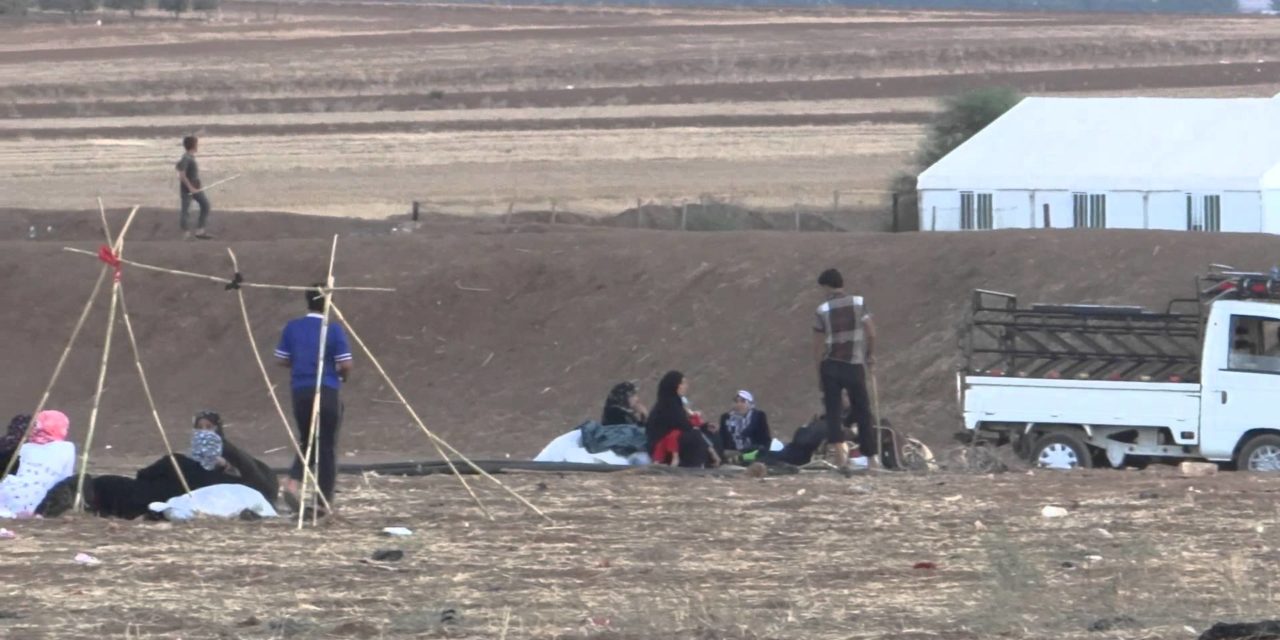The regime’s August 21 chemical weapons strikes on towns in East and West Ghouta have had repercussions in other parts of the country, with civilians fearing Assad’s forces could launch fresh attacks.
In Daraa Province in the south of Syria, fear of chemical weapons attacks — as well as intensified conventional attacks by regime forces in the area — have created a fresh wave of refugees, who have tried to flee to Jordan but were turned back after the authorities closed the border crossings.
An EA correspondent with excellent contacts inside Syria reports that civilians in and around the southern city of Daraa this week began to fear that the regime may be planning a chemical attack against targets in the area, after insurgent scouts spotted what they said was unusual activity around a regime military base around 50 kilometers from Daraa city.
According to the correspondent, civilians in Daraa city are encircled by front lines, as insurgents from the Free Syrian Army move northwards and clash with regime troops and pro-Assad militias. Locals say that many civilians want to escape to Jordan, but cannot because the Jordanian authorities closed the border crossings.
As fears of a potential chemical attack spread this week, civilians in Daraa panicked and tried to flee across the border, a source on the ground said, only to find that the Jordanian authorities have not just closed the official border crossing, but have also blocked unofficial smuggling routes.
As a result, an increasing number of Syrian refugees trying to cross into Jordan are camping at the border.
This short video report from Wednesday shows Syrians stranded near the Jordanian frontier, unable to cross:
Earlier this week, UNHCR representatives in Jordan said that the country has seen a surge of refugees since the August 21 attacks. On September 1, a UNCHR representative in Jordan tweeted that the country had seen the highest rate of arrivals in over a month, some from the Ghouta and Damascus suburbs.
249 #syrian arrivals to #jordan last 24 hrs, highest in over a month. Almost all via east border. Some arriving from Al Ghouta, Raf Damas.
— Andrew Harper (@And_Harper) September 1, 2013
However, Jordan’s fears that its already stretched resources can no longer absorb waves of refugees — the country has accepted 520,000 Syrians since the conflict began — have led it to shut the borders.
Aoife McDonnell, a UNCHR representative in Jordan, told reporters on Tuesday that the organization is “very concerned” about reports of thousands of Syrians just across the border, wishing to cross into Jordan.
McDonnell said that the UNHCR was increasingly worried as the situation worsens.
“As UNHCR, we have to be prepared for the worst-case scenario,” she added.
The number of Syrians from Daraa Province waiting to cross the Jordanian border — where they are particularly vulnerable to regime airstrikes — is likely to increase, however, as the Assad regime continues its offensive against towns and villages in the province.
Footage from Wednesday shows regime shelling on Daraa city:
Wounded in Jasem, north of Nawa, which has seen heavy regime attacks [WARNING, GRAPHIC IMAGES]
The regime has also continued to shell Tafas near Nawa. This footage from Thursday, uploaded by Daraa-based media activist Abo Gamal, shows the destruction of houses in Tafas following an overnight strike:
Activists based in Daraa on Thursday report that a hospital in the Mahatta neighborhood of Daraa City have run short of blood supplies, and there are people including two children wounded in attacks that are urgently waiting for transfusions.

